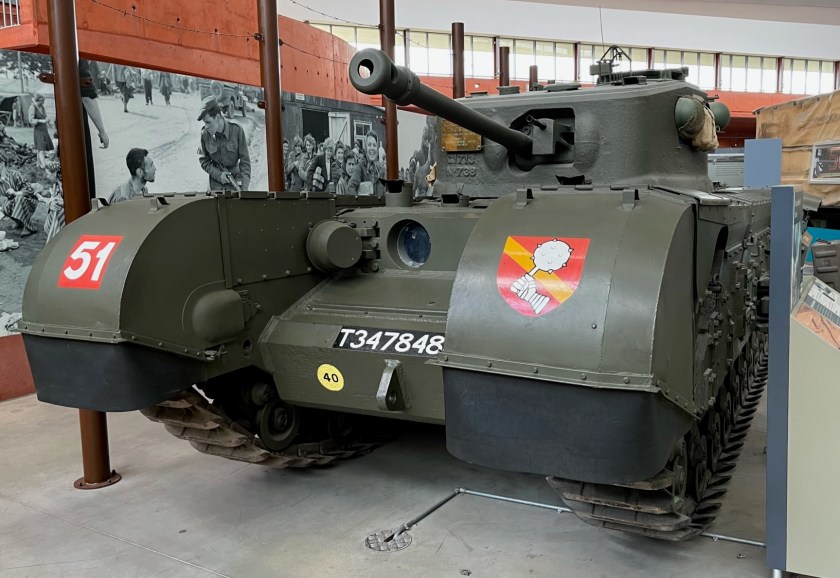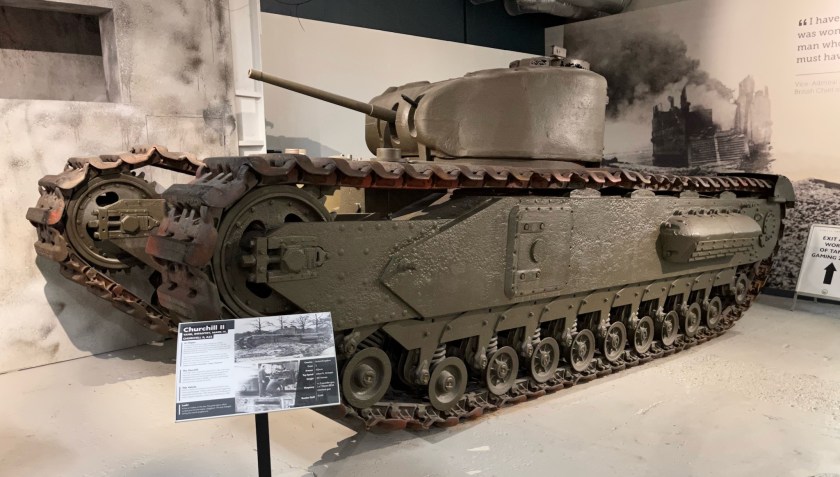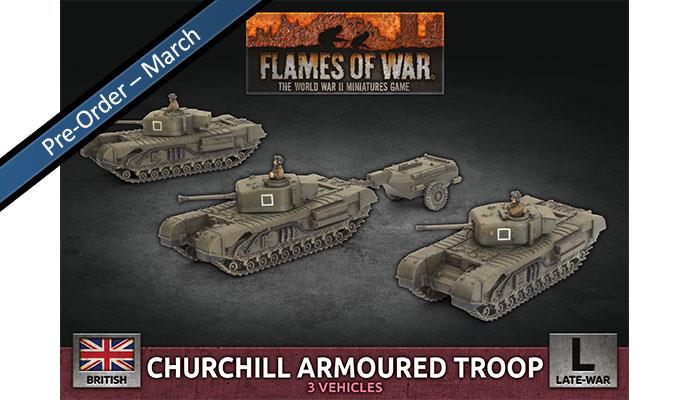The Tank Museum at Bovington’s British Churchill Crocodile Flame Thrower Tank is unusual from other Museums Churchill Crocodile tanks as it still has its fuel trailer.
The tank on display was the last Churchill Mark VII to be produced by Vauxhall, in October 1945. It was sent directly to the School of Tank Technology, which transferred it to the Tank Museum in 1949, with practically no mileage beyond its acceptance test. The Mark VII was the first of the factory-assembled marks with thicker armour in fulfilment of the “heavy Churchill” requirement of May 1943.
Three brigades of Churchills landed in Normandy in 1944, most with 75 mm guns, some with 6-pounders, a few with 95 mm howitzers.




























